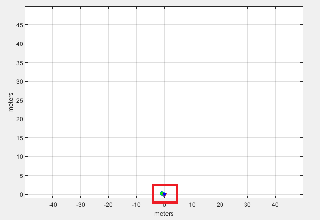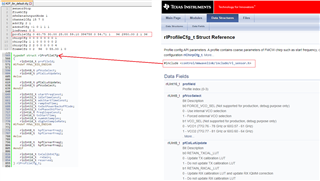Other Parts Discussed in Thread: MMWAVEICBOOST, DCA1000EVM, IWR6843AOPEVM, IWR6843AOP, IWR6843
I have a unique application to track a reciprocating pump piston rod at close proximity from 20cm to 30cm. Piston rod has a Stroke Length of 30cm with 1 to 240 Strokes Per Minute (SMP) - i.e. a maximum linear speed 0.01m/s to 2.4m/s, but the motion is complex with sinusoidal acceleration and speed, field of view 90 to 120 degrees. A model of the Piston Rod has been made for evaluation purposes.
I have managed to connect together IWR6843AOPEVM, MMWAVEICBOOST & DCA1000EVM and understood how to use the mmWaveStudio.
But I need some help:
1. In post processing the ADC data collected with Matlab:
a) as the default graph scaling is to coarse for me to analyse the motion. Could you please advise me on how to post process the data with the graph window range zoomed in to +/-0.5m instead of +/-50m. i.e. with a magnification factor of 100

b) mmWaveStudio post processing is assumed for RX1 - RX4 in linear arrangement (a straight line ?). But the IWR6843AOP has them in a square arrangement. How to process the data with square receive antenna arrangement.
2. A guidance to set Chirp parameters in Sensor configuration for ultra short range i.e. in +/- 50cm. As I try to increase the chirp bandwidth closer to the maximum of 4GHz to increase the range resolution with high number of ADC samples (>1024) mmWaveStudio is crashing / non responsive.
09/30 2021 Edited by Moderator for content formatting.



